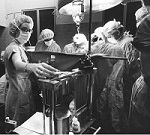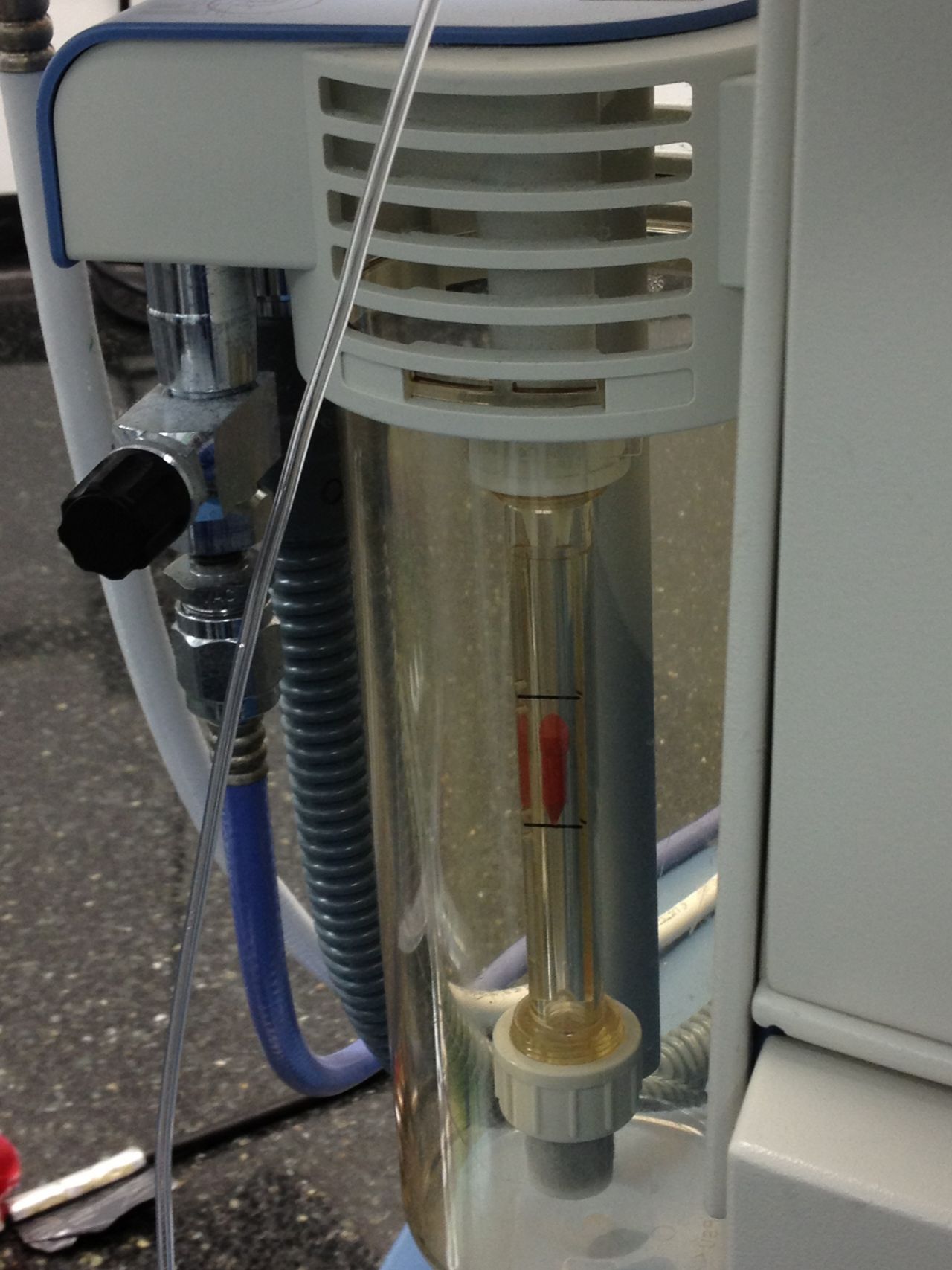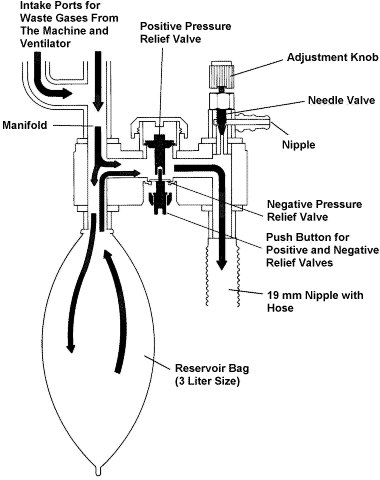
The Anesthesia Gas Machine
Michael P. Dosch CRNA PhD
University of Detroit Mercy - Nurse Anesthesia
This site is https://healthprofessions.udmercy.edu/academics/na/agm/index.htm.

The Anesthesia Gas Machine
Michael P. Dosch CRNA PhD
University of Detroit Mercy - Nurse Anesthesia
This site is https://healthprofessions.udmercy.edu/academics/na/agm/index.htm.
Revised May 2025
Scavenging may be active (suction applied) or passive (waste gases proceed passively down corrugated tubing through the room ventilation exhaust grill of the OR). Active systems require a means to protect the patient's airway from the application of suction, or buildup of positive pressure. Passive systems require that the patient be protected from positive pressure buildup only.
Another important distinction is that scavenger interfaces may be open (to the atmosphere; modern type) or closed (gases within the interface may communicate with the atmosphere only through valves; the older type). The different types of interface have clinical implications. Clearly, open interfaces are safer for the patient. From being distinctly uncommon, open interfaces have become almost universal on new equipment, so patient (and anesthetists') safety demands user's attention to the distinctions.
Open interfaces are found on most newer gas machines (e.g. Aisys, Apollo, Fabius GS). Aestiva may have an open or closed interface.
The Joint Commission requires scavenging. The professional societies (AANA, ASA) publish recommendations (see footnote 1).
OSHA recommendation: Workers should not be exposed to an eight hour time-weighted average of > 2 ppm halogenated agents (not > 0.5 ppm if nitrous oxide is in use) or > 25 ppm nitrous oxide (see footnote 2). Note that no recommended exposure limits have been established for desflurane, isoflurane, or sevoflurane (these guidelines are dated 2000).
The scavenger interface is the most important component. It protects the breathing circuit from excess positive or negative pressure. Positive-pressure relief is mandatory to vent excess gas in case of occlusion distal to a closed interface. If active disposal system, must have negative pressure relief as well. Reservoir highly desirable with active systems.
 |
Dräger open scavenging interface Click on the thumbnail, or on the underlined text, to see the larger version.
|
|
Dräger open scavenging interface Click on the thumbnail, or on the underlined text, to see the larger version (37 KB).
|
|
 |
Diagram of the closed scavenging interface (Ohmeda). Inset: external appearance of the interface. Click on the thumbnail, or on the underlined text, to see the larger version (42 KB).
|
Interfaces can be open or closed types. Open interface has no valves, and is open to atmosphere (allows both negative and positive pressure relief). Should be used only with active systems. Keep the suction indicator between the white etched lines. Remember that slight hissing from an open interface is normal- there is no audible indication of waste gas leaks.
While safer for the patient (no hazard of positive or negative pressure being applied to the airway as a result of scavenger failure), the risk of occupational exposure for providers ignorant of their proper use is higher with the open interface (see footnote 3).
Closed interface communicates with atmosphere only through valves. Should adjust vacuum so that reservoir bag neither flat not over-distended.
Effectiveness: Scavenging and careful technique can reduce levels of WAGs in our work space to levels at or below that recommended by OSHA.
Avoiding waste gas exposure: Evidence of harm to anesthesia personnel from waste gases is suggestive but unproved (strongest relationship is N2O and reproductive difficulties). There are definite hazards to patients when scavenging systems fail- so consider the scavenger part of the breathing system and check it each day. The smell of gas during a case is abnormal and the cause should be sought.
Good technique will also help lessen exposure: